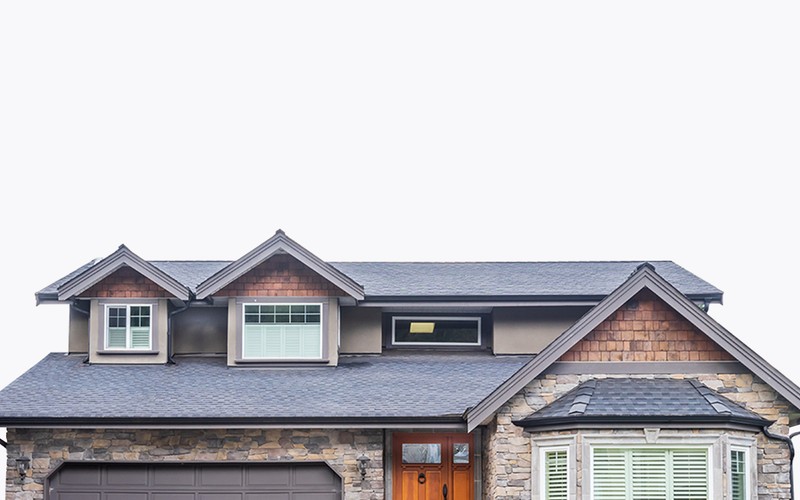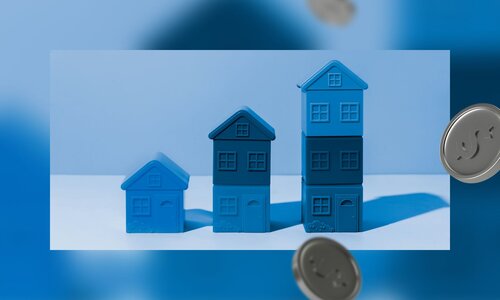When purchasing a home, you need a down payment, that is, a certain percentage of the purchase price paid upfront in cash. This down payment is typically 20% or more—the rest is the mortgage you borrow from a bank or other lender—but it’s not always possible for a home buyer to come up with that amount. In these situations, it’s still possible to purchase a home with a low down payment, but you’ll be required to take out mortgage insurance, which protects the lender in case of a default.
In this article, we’ll talk about what mortgage insurance is, the situations in which you’ll need it, and how to get rid of it once you’ve paid off a portion of your mortgage.
What is mortgage insurance?
Simply put, mortgage insurance is an insurance policy to protect the mortgage lender. The borrower of the mortgage loan pays for it.
Think of it this way: when you’re borrowing money for homeownership, the lender wants to be sure that you’ll be able to repay that amount and meet your monthly mortgage payment with no issues. A way to ensure that you’re purchasing a property you can afford is by requiring a down payment—typically 20% of the property’s value. The lender gives you a mortgage for the rest. However, the lender is in a riskier situation if you cannot come up with 20%. Monthly or annual mortgage insurance allows the lender to mitigate that risk. This allows the buyer to purchase a home without coming up with a substantial amount of cash upfront while also ensuring the lender isn’t at risk in case the borrower defaults.
In a conventional mortgage (that is, a home loan that isn’t federally guaranteed or insured), a lender will require you to pay for private mortgage insurance or PMI if you’re putting in less than a 20% down payment.
How does mortgage insurance work?
Mortgage insurance protects the mortgage lender, not the buyer. If you miss or fall behind on your payments, you could still go into foreclosure, lose your home, and get a significant dent in your credit score.
How it works is simple: The lender chooses the mortgage insurance company, and then, typically, they’ll add the bill to your monthly mortgage payment. What this translates to financially for you is an increase in the cost of your loan and a higher monthly mortgage payment. Your PMI contribution is used to pay a portion of the principal to cover the lender if you default or stop making payments. Alternatively, you can pay the upfront mortgage insurance premium in one lump sum at the start of your loan.
It’s important to remember that mortgage insurance is not the same as mortgage life insurance. The buyer also takes out mortgage life insurance but as a homeowners insurance policy that pays off the remaining mortgage if the buyer dies while still owing on the mortgage. It is taken out to protect the borrower’s family or dependents, not the lender.
What is the cost of mortgage insurance?
You’ll end up paying between 1 and 3% of your home’s purchase price on PMI, but the annual premiums can vary widely depending on a few factors. These include:
- PMI type
- Fixed or adjustable interest rate
- Term of mortgage
- The loan-to-value (LTV) ratio
- Insurance coverage required by the lender
- Credit score, as well as other risk factors identified by the lender
- Home value
- Whether the premium is refundable
Anything that raises the risk for the lender will also raise the premium for your PMI. For instance, if you have a low credit score and a 3% down payment, your PMI will be much higher than for a buyer with a similar home value but who has put down 10% and has good credit.
Some PMI policies will also allow a declining renewal. That is, your PMI premium will decrease each year as your equity increases and risk declines. Other policies, known as constant renewal policies, are based on the original loan amount and offer no change for the first ten years.
The benefits of mortgage insurance
With home values on the rise, it can be challenging to come up with the 20% deposit required by most lenders to buy a home. For many first-time homebuyers, the ability to get on the property ladder and save the money they’re paying on rent and put it towards a mortgage instead can be an exciting time, but saving up for a substantial down payment can be difficult, especially in the years following the pandemic.
Mortgage insurance allows buyers to purchase a home while assuring lenders that they’re protected should things go south. Once you’ve put down 20% through your monthly mortgage payments, you can ask for a cancellation of the insurance or refinance for a better deal.
Types of mortgage insurance
The type of mortgage insurance you will get will depend on various factors, the primary among them being the type of mortgage you have. Here are the different types of mortgage insurance on offer.
Borrower-paid mortgage insurance
When we talk about PMI, this is typically the type of mortgage insurance we’re talking about. The borrower-paid mortgage insurance or BPMI is usually rolled into your monthly mortgage payment, with little or no initial payment required at closing. After you’ve paid more than 20% of the home’s value, you can ask your lender to cancel the insurance.
Lender-paid mortgage insurance
Lender-paid mortgage insurance (LPMI) refers to mortgage insurance in which the lender pays the mortgage insurance. However, the mortgage rate is much higher—typically up to 0.5% more. LPMI is also built into the payment schedule for the entire term of the loan, so it’s not something you’ll be able to cancel once you reach a certain amount of equity in the home.
FHA mortgage insurance premium (MIP)
While borrower-paid mortgage and lender-paid mortgage insurance are the most common types of mortgage insurance for conventional loans, for government-backed home loans, the options tend to be different. When you get a Federal Housing Administration or FHA loan, for instance, you’ll be required to pay a qualified mortgage insurance premium. This is a mandatory premium, regardless of the down payment size, and costs the same, no matter your credit score. In most cases, you’ll be required to pay the mortgage insurance for the loan term unless you make a down payment of 10% or more. In that case, the MIP is removed after 11 years.
How to stop paying mortgage insurance
While mortgage insurance allows you to get on the property ladder and buy a home without a substantial down payment, it comes at a high cost. There are, however, ways to avoid paying mortgage insurance and—if you are paying it—to stop once you meet certain conditions. Here’s what you need to keep in mind:
- Put down 20% or more: The easiest way to avoid mortgage insurance is to put down at least 20% of the home value as a down payment. This may be difficult to do if you’ve just started saving or you’re still at less than 10%. However, if you’re close enough to 20%, it might be worth making that extra push and getting to the 20% mark to avoid all the additional charges that will come with a PMI.
- Take out a second mortgage: Referred to as “piggybacking,” this is when a buyer takes out two mortgages—the first is capped at 80% of the home’s value, and the second is used to finance the balance. The second mortgage is often at a much higher interest rate and requires at least a 10% down payment.
- Get a government-backed loan: If you qualify for a Department of Veterans Affairs or VA loan or a USDA loan, you don’t need to get mortgage insurance, though funding fees are associated with both.
- Pay down your loan: As you pay down your loan and get more equity in the home, keep monitoring your home’s market value and mortgage loan balance. Mortgage insurance is based on your loan-to-value ratio (LTV). Once the principal balance of your loan falls below 80% of your home’s value or purchase price, you can either consider refinancing or contact your lender to eliminate PMI. Under the Homeowners Protection Act, lenders must cancel your mortgage insurance once your balance reaches 78 percent of the original purchase price or once you reach the halfway point of your amortization schedule, for instance, 15 years of a 30-year mortgage.
Bottom line
Getting started in real estate can be challenging, especially as a first-time buyer, so any help you can get is welcome. This is where mortgage insurance can come in handy for potential homeowners who don’t yet have the 20% deposit they need to get a conventional mortgage. With mortgage insurance, you give the lender peace of mind while ensuring that your hard-earned money goes towards an asset you own.
Easily invest in real estate with Arrived
At Arrived, our mission is to give everyone—regardless of their background and income levels—the chance to get on the property ladder. Through our platform, you can purchase shares of rental properties for as little as $100 and start building a portfolio—and a rental income—today. Please browse through our available properties here.
The opinions expressed in this article are for general informational purposes only and are not intended to provide specific advice or recommendations for any individual or on any specific security or investment product. The views reflected in the commentary are subject to change at any time without notice. View Arrived’s disclaimers.







